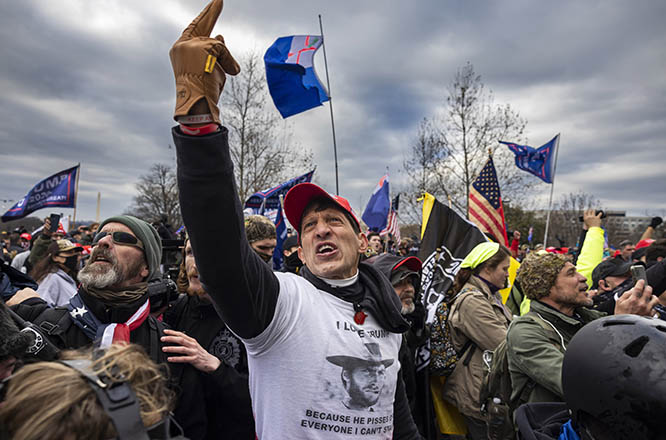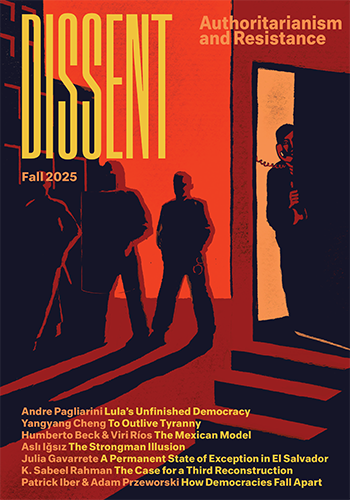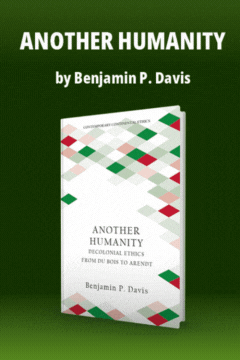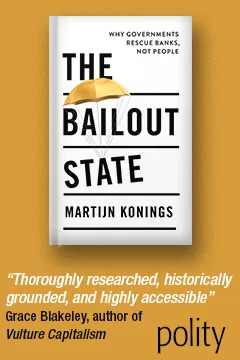Pride and Prejudice
Pride and Prejudice
For Arlie Russell Hochschild, understanding why rural voters favor Trump requires coming to grips with the role of emotion in politics.

Stolen Pride: Loss, Shame, and the Rise of the Right
by Arlie Russell Hochschild
The New Press, 2024, 400 pp.
Last fall, the waters rose in Appalachia and did not stop until many were dead and many more were homeless. As the remnants of Hurricane Helene tore through the region, I waited for word of family and friends, and watched online as they documented the destruction. In tiny Damascus, Virginia, the town nearest my childhood home, the waters inundated the main street and tore houses off their foundations. Soon I saw something worse on social media: when the Nolichucky River overflowed in Erwin, Tennessee, it swept away workers at a nearby plastics factory. Survivors said their bosses had called them into the plant despite troubling forecasts, and when the flooding began, forbade them to leave.
So there was cruelty; but as volunteers gathered and mutual aid networks stepped in, there was solidarity too—the tale of any natural disaster. A complex picture of rural Appalachia emerged, at odds with more simplistic narratives about “Trump country” and the people who live there.
In the weeks before the hurricane, I was reading Arlie Russell Hochschild’s new book, Stolen Pride: Loss, Shame, and the Rise of the Right, which focuses on an area of Appalachia spared by Helene’s wrath. Hochschild, a famed sociologist, came to know the people of eastern Kentucky’s Fifth Congressional District from 2017 through 2023, in a quest to understand how the once-centrist district came to heavily favor Donald Trump. During years of conversations about politics, Hochschild encountered resentment, even racism; but a deeper phenomenon was also in play, she argues. “Many Appalachians I came to know were caught in a ‘pride paradox,’’’ she writes. Local Republicans “felt fierce pride in hard work and personal responsibility,” she adds. “On the other hand, their beleaguered economy greatly lowered their chance of success” and made them more susceptible to shame. People in this predominantly white corner of central Appalachia thus face a “dilemma,” as Hochschild puts it. Once confronted with “unwarranted shame,” they must respond to it somehow. They can direct that shame at themselves, at someone else, or discover some other, more “creative solution” to the “paradox.”
Hochschild’s “pride paradox” is deeply human, and renders legible a region and community that defy easy explanation. Toward the end of Stolen Pride, Hochschild reflects on the concept of “overburden,” a term borrowed from the coal industry, referring to the soil that is dumped when machines blast the tops off mountains to expose the coal underneath. Hochschild likewise sees traces of “overburden” in workers who “show the scars of an economic machine that has disrupted the ecology of their lives.” She speaks to one such worker, a coal miner who became addicted to OxyContin after suffering an accident on the job. His reasons for supporting Trump in 2016 are connected to his experiences, but they are not so easy to dismiss. “When Trump told us he was going to bring back coal, I knew he was lying,” he tells Hochschild. “But I felt like he saw who I was.”
Overburden also carries dangers. As Hochschild explains, human overburden is emotional, and certain leaders can tap into it, “creat[ing] a mortal challenge to the honest vote, the fair election, the government official who is loyal to a public office and not a given leader—all of which constitute America’s own most precious resource,” she writes. Hochschild’s empathy is always tempered by political reality. The danger of overburden only heightens the need for understanding.
In Stolen Pride, Hochschild continues the work she began with 2016’s Strangers in Their Own Land, which sought to answer a question that has long plagued the liberal imagination: Why do so many conservatives vote against their own interests? To accept the premise is to believe that Tea Party supporters in Louisiana, where Hochschild spent her time, were simply confused. People who suffered from pollution, for example, kept voting for politicians who deregulated the very industries that made them sick and destroyed their homes. It’s a tempting narrative for its simplicity. But for Hochschild, that explanation led nowhere. Truly understanding the problem required coming to grips with the role of emotion in politics. This impulse, too, builds on her previous work; Hochschild is well known for having coined the term “emotional labor.” In the bayous Hochschild uncovered what she called a “deep story” that her subjects held dear. Conservatives believed “they were standing in line waiting to move forward toward the American Dream,” but also that “women, African Americans, immigrants, and refugees” were “line-cutters.” However inaccurate, the story satisfied a need for validation, and right-wing politicians told them what they wanted to hear.
Stolen Pride is similarly distinguished by compassion and rigorous analysis, which makes it a subversive text. Mainstream coverage often flattens rural areas, reducing them to their whitest, most conservative or most confounding elements. Consider the popularity of Hillbilly Elegy, published nearly a decade ago as Trump and Hillary Clinton battled it out for the presidency. Trafficking in cheap stereotypes about poverty and regional character, the book’s jaundiced view of rural Appalachia and the Rust Belt bore little resemblance to either place in reality. Liberal audiences embraced the book and helped transform its author, J.D. Vance, into a celebrity long before he became Trump’s running mate.
In Stolen Pride, Hochschild writes that when she came up with the notion of a “deep story,” she did not anticipate “the continuing escalation of anger” at so-called line-cutters and their allies. Many conservatives now long for retribution against their perceived enemies. And to some on the left, she writes, the words “rural, white, blue-collar, male” amount to another shallow stereotype, “one that I wished to explore from the inside rather than judge from afar.” Up close, it’s clear to Hochschild that the source of much of the political anger she encounters is collective rather than individual. She concludes that rural whites, like all Americans, live in “a pride economy.” Though pride and shame are personal feelings, they are also rooted in what she calls “larger social circumstances.” The latter are difficult in the Fifth Congressional District, where the coal industry is in terminal decline and the opioid crisis simmers. But the local dynamics are more complicated than many outsiders care to understand.
The town of Pikeville, for example, where Hochschild spent much of her time, is not wealthy by any metric, but it is home to a small hospital and a private university, and is seen as somewhat rich by residents of the surrounding hollers. Moreover, it has a more dynamic recent political history than is usually acknowledged by the media. After Trump won the district, white nationalists looked at Pikeville and thought they saw an opportunity. In 2017 posters began to appear in the town showing a tall, white father tossing a happy white child in the air, as a white mother stands by his side. The posters addressed “white working families” and invited residents to a white nationalist march. Most locals were not fooled. “You know that white nationalist guy who’s leading the march? He’s coming to eastern Kentucky because he thinks we’re poor, dumb white hillbillies who don’t know any better than to follow him, okay?” David Maynard, a Fifth District native, told Hochschild, adding, “I am poor and I am dumb and I am white, okay? So, he’s coming for who he thinks I am. But I’m not who he thinks I am. I may be a hillbilly, but I’m not a redneck. I don’t mistake my heritage for who I am. I have my own opinions.”
The white nationalists hadn’t counted on people like Maynard; in fact, most were not from the area at all and knew little to nothing about local demographics or dynamics. (As Hochschild points out, Pikeville is not exclusively white.) When they converged on the town and attempted to march, they were outnumbered by counter-protesters chanting, “Appalachia comin’ atcha, Nazi scum. We’re gonna smash ya! Punch a Nazi in the face! Every nation, every race!” Why, then, did the Fifth Congressional District mostly embrace Trump, only to reject white nationalists? Hochschild doesn’t fully answer the question, but she offers us some valuable analytical tools. She wants us to recognize that Trump was not perceived as some outside radical coming to stir up racial hatred, but as a champion who spoke to a sense of wounded pride.
Hochschild’s notion of a “pride economy” clarifies Trump’s appeal to people of varying socioeconomic backgrounds in places like Kentucky’s Fifth District. According to Hochschild, Trump filled an “emotional vacuum,” perhaps even more than an economic one. Data show that while Trump has made inroads with poor whites in places like eastern Kentucky, and won in 2024 thanks to gains with working-class voters everywhere, his strongest base has tended to be the relatively well off, the local gentry of a depleted area. As journalist Patrick Wyman argued in 2021, Trump recognized early on the power and influence of this gentry class, “the salt-of-the-earth millionaires who see themselves as local leaders in business and politics, the unappreciated backbone of a once-great nation.” Hochschild notes a similar phenomenon, writing, “As I discovered in my earlier study of Louisiana Tea Party enthusiasts, those most enthralled with Donald Trump were not at the very bottom—the illiterate, the hungry—but those who aspired to do well or who were doing well within a region that was not.”
Trump’s core supporters thus are more likely to perpetuate class inequality than to suffer from it. (Hochschild later adds that “class inequality, as opposed to poverty per se, seldom came up among the Trump supporters I met.”) Of Hochschild’s subjects, one of the most committed Trump supporters is Roger Ford, who grew up middle-class in the Fifth District. His “anguished pride was not based on surviving poverty” or “on protecting whites from it by foisting poverty onto Blacks” or on recovery from addiction, but on “fighting to make Pike County one of those better-off places people didn’t have to leave,” she writes, adding, “he based his deepest sense of pride, it seemed, on his role as defender of his imperiled rural homeland, from which so much had been lost—or, as it could feel, ‘stolen.’” Ford wants to reverse Pike County’s population decline and with it, the region’s diminishing political influence—a goal subsumed into a broader narrative about stolen prosperity.
The “stolen” narrative can become dangerous, as rioters would later prove when they invaded the U.S. Capitol to protest what they insisted was a stolen election. After January 6, Ford told Hochschild that while he condemned violence and racism, he feared that rural whites “would take the blame for the invasion,” even though most of the rioters weren’t from places like the Fifth District, and moreover, he felt the action caught on camera “wasn’t typical of everyone there.” With time he became convinced the election had indeed been stolen from Trump, a view that has become common among Republican voters. A 2023 CNN/SSRS poll found that “63 percent of Republican and Republican-leaning people also believed the 2020 election ‘stolen’—half because they thought the evidence ‘solid,’ and half because they had a suspicion,” she writes. Trump’s most loyal supporters had come to identify so strongly with the former president that a kind of fusion occurred: an insult to Trump was an insult to everyone who voted for him. Out of this miasma rose conspiracy theories and deepened distrust of the democratic process.
Conspiratorial thinking, as exhibited by Ford and others, represents a growing threat and not just in rural America. But it isn’t enough just to say so. As Hochschild’s work shows, if we’re to salvage democracy from the structural forces assailing it, we must reckon with each other’s “deep stories” first. That doesn’t mean we must accept someone’s deep story as the gospel truth, but we stand little chance of persuading anyone if we don’t first understand what it is they believe, and why. If Hochschild is right that we “all feel a desire for pride and fear of shame,” then we are all vulnerable to figures and forces that can tap into those emotions, regardless of who we are and how we vote. We are not equally susceptible to the appeal of the far right, but we’re all human, and thus more alike than we sometimes admit.
As to where we go from here, Hochschild offers no easy answers. She notes that some have proposed “a rural new deal,” including progressive Anthony Flaccavento, who in 2018 ran unsuccessfully to represent my home congressional district in southwestern Virginia. She also raises the idea of “an emotional new deal to restore losses in the pride economy. . . This would require a place in the nation’s memory to tell the rural story and mourn its losses, a national version of the sheltered wooden benches found on hillside cemeteries south of Pikeville.” Hochschild leaves it to her readers to flesh out the details. We can start with the truth—what happened to the Fifth District, who is to blame, and what can be done now to address Hochschild’s “pride paradox” before shame completely takes over.
Recently, the right has done a much better job than the left at capitalizing on rural resentment. In the wake of Helene, what liberals call “misinformation” (and others might simply call propaganda) circulated on social media. FEMA was ignoring devastated communities, the posts claimed, and some Republican politicians picked up the theme. Not long after Vance appeared in Damascus, Virginia, for a glorified photo op, he claimed that there wasn’t enough money to help locals because the government had spent all its resources on “illegal aliens.” Solidarity is the antidote to Vance’s demagoguery, and it lives on in Appalachia, where it is often a source of pride, even under the decades-long assault by the forces of neoliberalism.
Pike County, Hochschild writes, offers “a number of quietly inspiring models for how to move forward,” including the story of James Browning, a white man whose addiction recovery meetings enabled him to connect with recovering addicts who are Black. Browning also learned something about solidarity, which demands a capaciousness of us all. When an older Black woman tells him that white Americans like himself may understand the pain of addiction but not that of segregation, he tells Hochschild, “I got that.” Later Hochschild cites a national survey which found that “the highest white support for help to Blacks was among the precarious poor whites, those who most feared losing their jobs, at 66 percent.” To Hochschild, “this cross-race, bottom-to-bottom channel is, perhaps, thin and chancy, but I believe that, for the Jameses, the David Maynards and others of the world, it’s there.” Deep stories aren’t chiseled in stone. The right series of interactions or ideas can shift the way any of us perceive the world and our position within it. Rural whites can—and often do—see Black Americans as co-laborers in a common struggle, rather than “linecutters.” As “thin and chancy” as that sense of solidarity may be, it offers the best hope for the future. Anything else is a political dead end.
Sarah Jones is a senior writer for New York Magazine and the author of Disposable: America’s Contempt for the Underclass, forthcoming from Avid Reader Press. She grew up in southern Appalachia.






